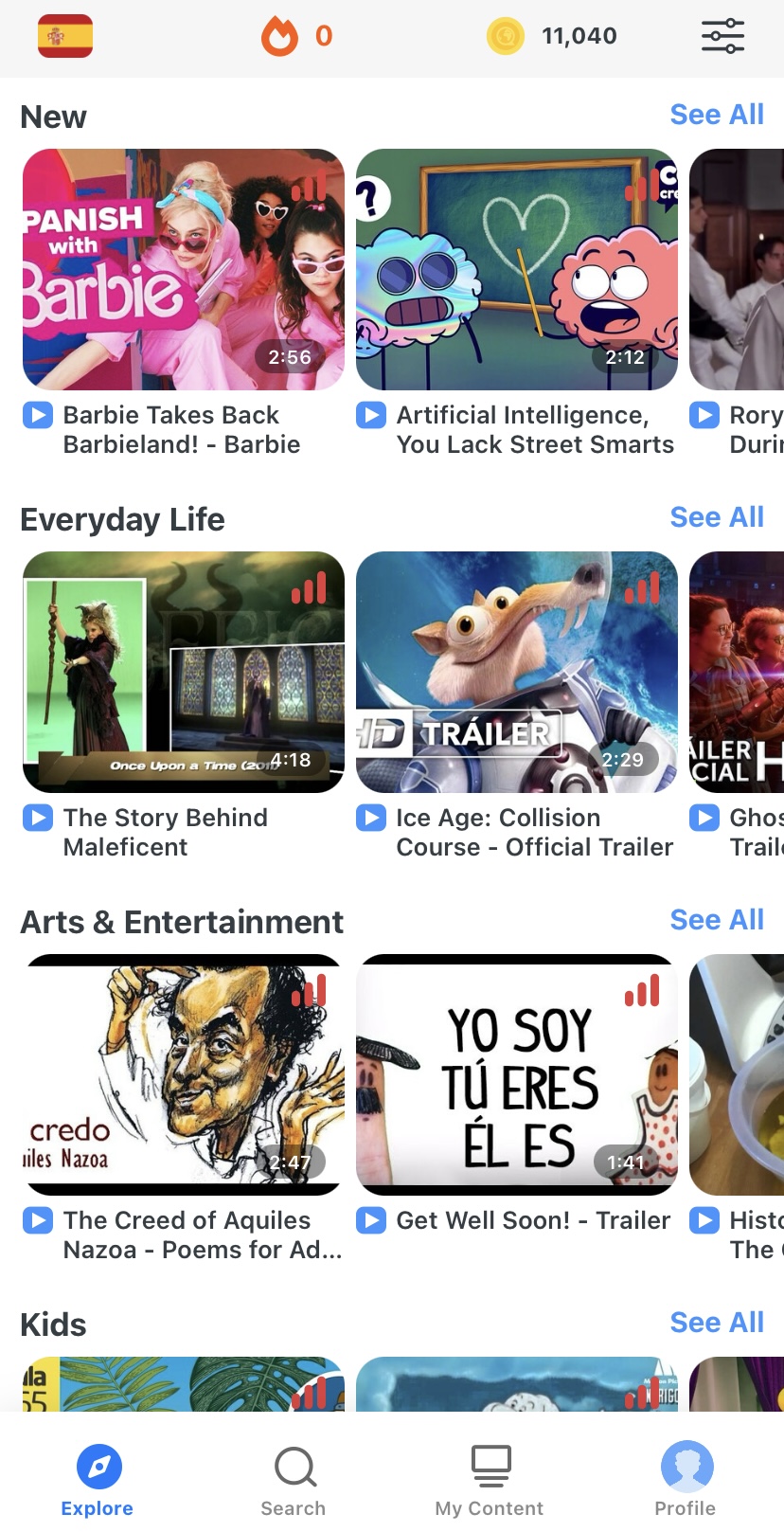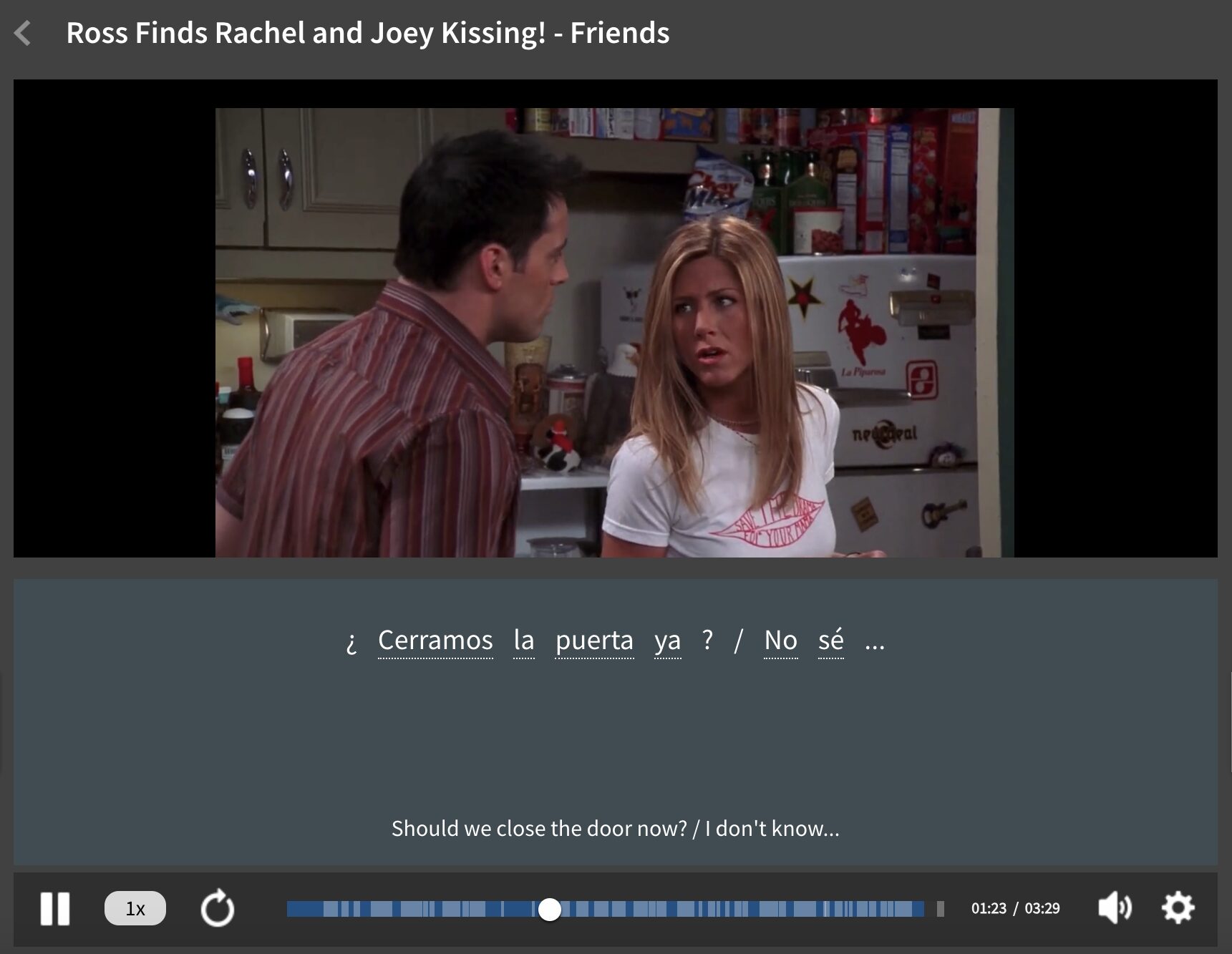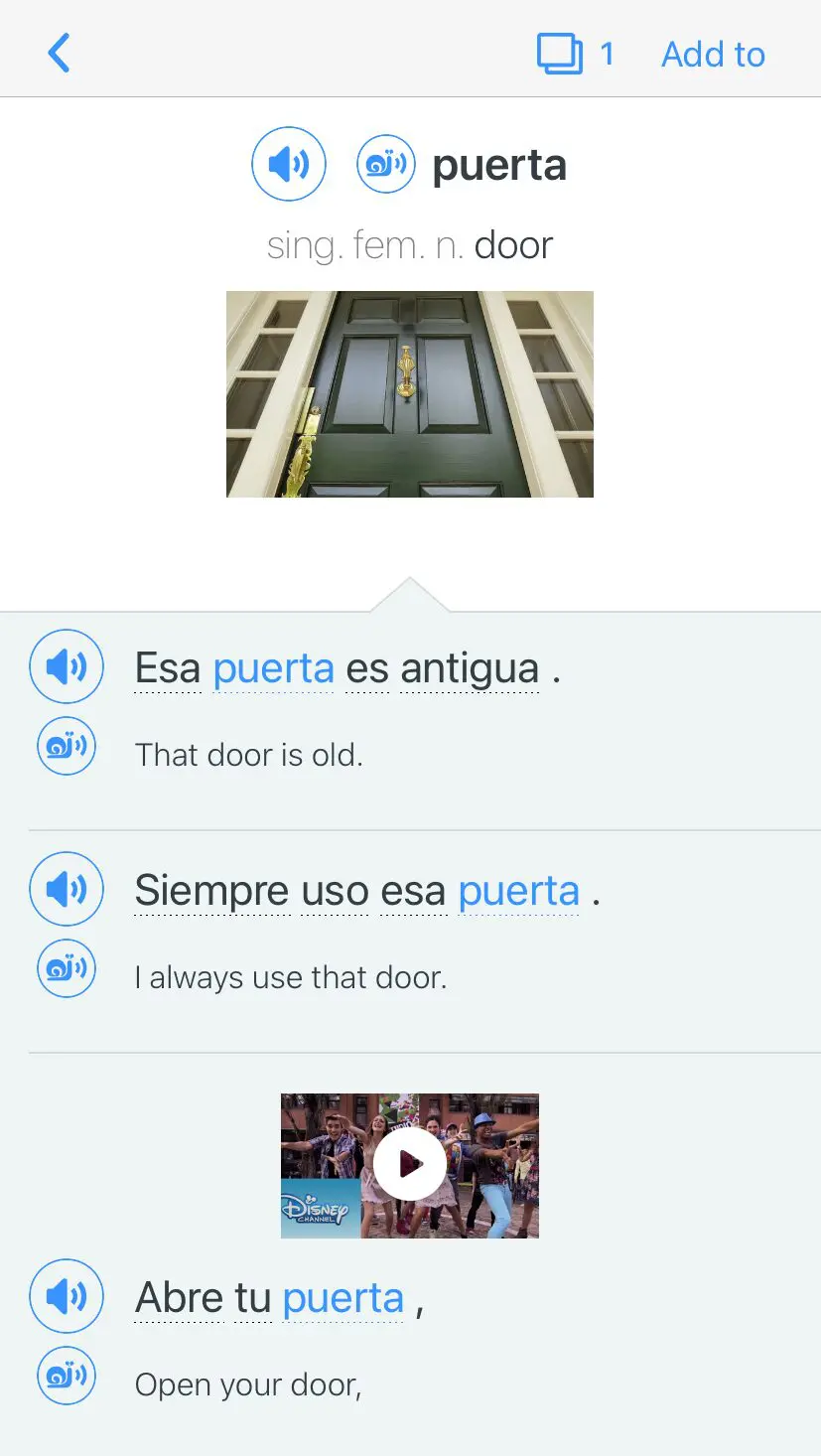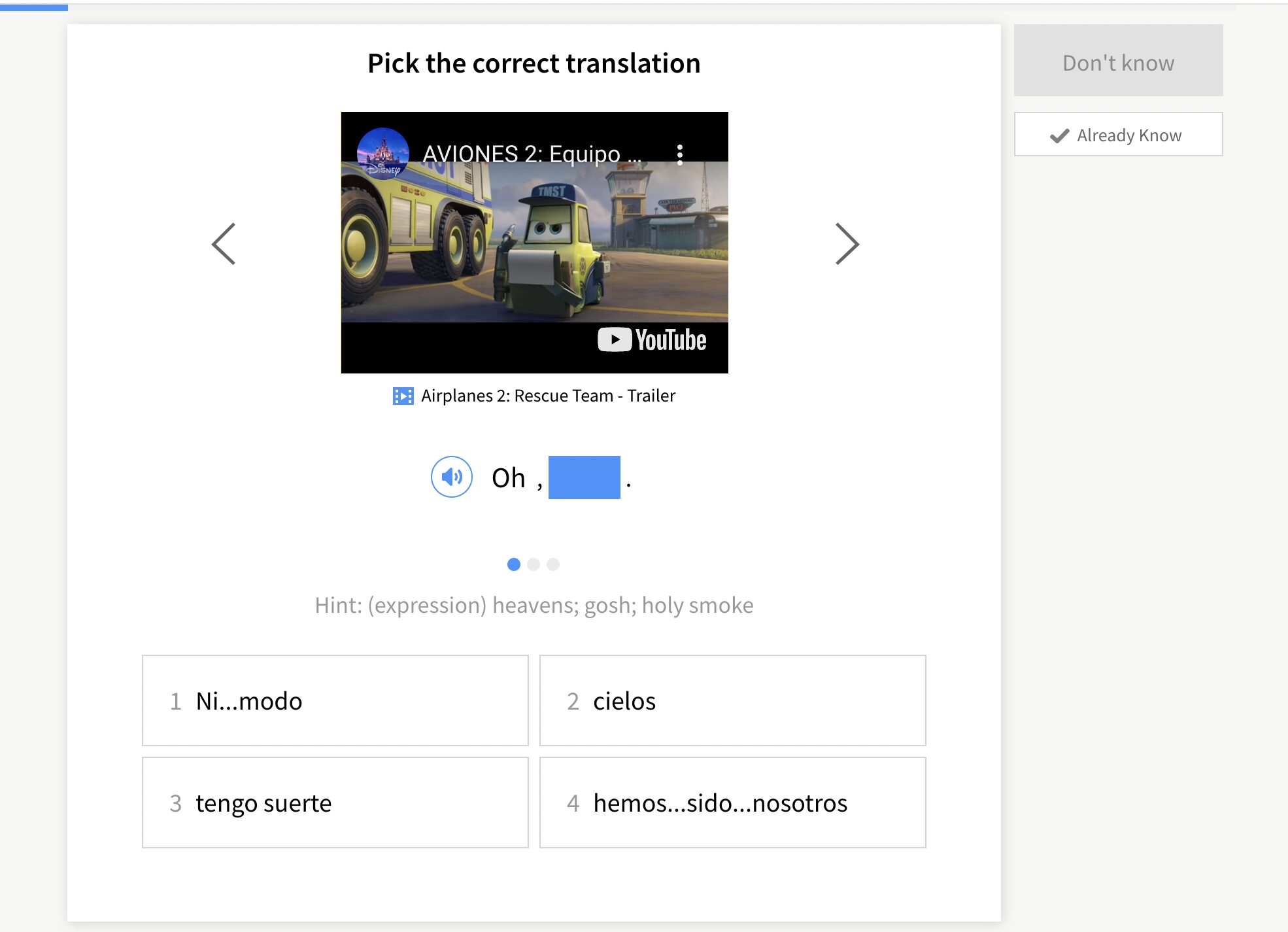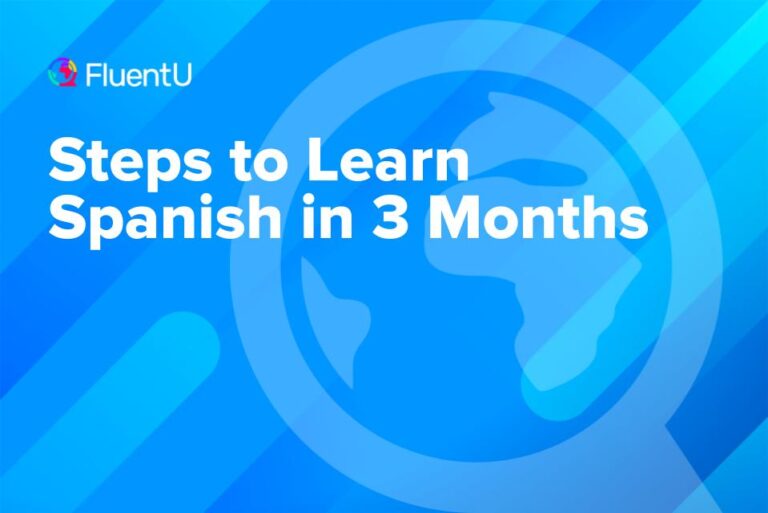Where to Start Learning Spanish (From to Someone Who’s Done It)
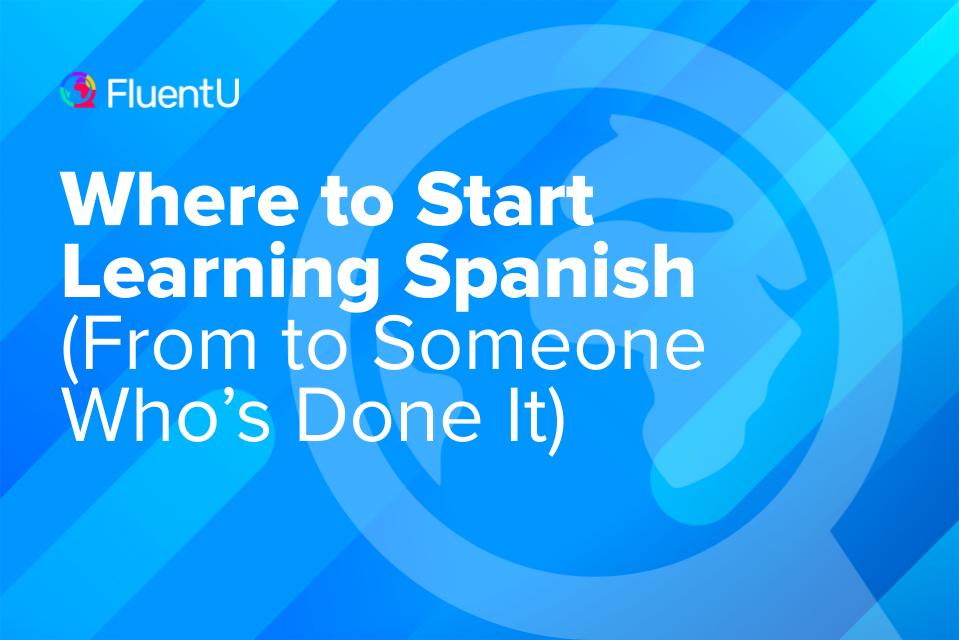
Did you know that by choosing to learn Spanish, you’ve opened up a whole new universe of possibilities? Spanish is one of the easiest languages, as well as one of the top-ranked languages, to learn. And to make this a trifecta, it’s the third most spoken language on this planet.
Like with any undertaking, if you take a haphazard approach to language learning, you’re just setting yourself up for confusion and potentially even failure. It might seem a bit overwhelming to get started, but don’t worry—this post is all about what you need to do to start learning Spanish.
Download: This blog post is available as a convenient and portable PDF that you can take anywhere. Click here to get a copy. (Download)
Step 1: Understand Your Motivation
Motivation is critical for learning a language.
Whether you’re going on a trip to a Spanish speaking country and want to speak with the locals, work with Spanish speakers or want to communicate with your Spanish-speaking friend, it is important to keep that motivator in mind.
The more personal your motivation is, the more compelled you’ll be to stick to your learning goals.
Learning a language is a serious commitment, and rarely is it possible without a genuine motivation towards some sort of authentic communication.
Without a good motivation, you may find it hard to stick to your guns when things get tough.
Step 2: Set Proper Goals for Your Learning
You can’t set yourself up for success in learning Spanish if you don’t even know what you’re working for.
You need to set goals for your learning to guide you through the process. These goals should be SMART goals, which stands for:
- Specific. State exactly what you want and for what purpose.
- Measurable. You have to be able to see your progress in some tangible way. “Speaking often” is not measurable. “Speaking for three hours a day” is.
- Attainable. If you make a goal that is too far out of reach, you’ll lose motivation and give up.
- Relevant. If your goal isn’t something that actually matters to you, you’re less inclined to work for it.
- Timely. Set a time frame for learning, then stick to it.
If you set your learning goals right from the beginning, you’ll know what you need to do to learn, why you’re doing it, when you’ll be working on language lessons, how you’re progressing and even where you want to end up.
The goals couldn’t be clearer—and clear goals often predict a positive outcome.
Step 3: Start a Course
You need to find a Spanish course that best suits your learning style. There are several popular ones that take the scare out of learning for auditory, visual and kinesthetic learners.
Additionally, there’s a course for every budget.
Let’s check out the details on a few:
Babbel courses are organized by learning levels and targeted towards different interests.
From beginner to advanced, it’s an easy, fun method to make quick progress. It also has an app, as well as courses devoted to grammar, pronunciation and other relevant topics.
FluentU is a language education app that uses short video clips from authentic Spanish media for an immersive learning experience. The program offers useful tools including interactive subtitles, personalized vocabulary quizzes, flashcards and more.
BBC Languages: Spanish is an archived site, but that doesn’t mean the material there isn’t useful.
There are free lessons, games and even an interactive learning video drama, “Mi Vida Loca” (“My Crazy Life”), that are great sources for beginning learners.
The videos highlight cultural aspects while providing an opportunity to hear native speakers interact.
Coursera is a company that provides online access to courses taught at colleges and universities across the globe.
Video lectures and discussion forums make learning Spanish an interactive educational experience. Courses are free unless you want a certificate of completion.
Step 4: Buy Some Books
By books, I mean all kinds of books, it doesn’t just need to be a textbook.
Textbooks are useful for learning the fundamentals, but reading actual Spanish books will also help your language skills tremendously.
Even from a beginner level, you can find plenty of Spanish books meant for all competencies.
Spanish readers are an excellent learning tool. They are graded so progression from one level to the next is a simple process, based on vocabulary acquisition. Begin with one that doesn’t require any prior Spanish knowledge, then work your way up.
When you’re ready for meatier reading material, Amazon is filled with Spanish-language books, from the basics to contemporary bestsellers.
If you do decide to go with textbooks, try to make sure that your textbook teaches the register and regional variety of Spanish that’s most relevant to your goal.
You don’t want to bother learning vosotros (informal plural “you”), if you’re planning to go to Latin America.
Step 5: Set a Schedule
It’s natural to be excited about a new learning experience, but that often translates into biting off more than you can comfortably chew.
One useful strategy to avoid overwhelming yourself is to make a chart of what you’re doing and when.
A sample schedule might look like this:
Week 1: One hour of coursework and 30 minutes of vocabulary practice; five times per week
Week 2: One hour of coursework, 30 minutes of vocabulary practice, 30 minutes of Spanish videos; five times per week
Week 3: 90 minutes of coursework, 45 minutes of vocabulary practice, 15 minutes of writing practice, 30 minutes of videos or gaming; five times per week
The idea is to build upon the previous week’s plan. And, of course, when it comes to language learning, more is better!
Step 6: Immerse Yourself in Spanish
Remember how you learned to speak your first language when you were a kid? You picked up on it as you were completely immersed by it.
Language learning is facilitated by that type of non-stop exposure. When you’re tackling Spanish, you should also try to set up an immersive environment.
Most of us can’t take off for a Spanish-speaking country tomorrow, but we can certainly find ways to immerse ourselves at home:
- Surround yourself with Spanish by labeling items around your house or office.
- Have conversations with yourself in your head or out loud (if nobody’s around to hear, of course).
- Change your phone’s settings to Spanish. Watch movies and listen to music in Spanish. You can also use a video-based language learning program like FluentU.
FluentU takes authentic videos—like music videos, movie trailers, news and inspiring talks—and turns them into personalized language learning lessons.
You can try FluentU for free for 2 weeks. Check out the website or download the iOS app or Android app.
Click here to take advantage of our current sale! (Expires at the end of this month.)

- If you do know someone who speaks Spanish, ask them to only speak Spanish around you.
- Watch your favorite English TV shows and movies, but in Spanish. Here’s a video from the FluentU YouTube channel that uses a Spanish-dubbed episode of “Friends” to break down meaningful vocabulary and grammar:
And here’s one from “Two and a Half Men”:
Any way that you can think of incorporating Spanish into your life, do it!
Other Things to Know About Starting Spanish
While you now know what steps to take to start learning Spanish, here are some more things that are good to know:
What to Expect in the Beginning
Sometimes adults expect to pick up on a new language as if it were their own. What we tend to forget is that we even made mistakes when we were learning our native language!
Whether it’s your first, second or fifteenth language that you’re learning, you will not be perfect. Mistakes are bound to happen in the beginning. And in the middle. Even when we’re fluent in a language—any language—mistakes happen. So don’t expect Spanish to be any different.
Remember that it also takes a lot of repetition and practice to grasp a language, so you may feel overwhelmed at times, but that’s okay!
Mistakes and determination aside, you’re probably wondering how long it takes to learn Spanish. The answer is, that depends on you. It depends on your learning style, your motivation level and how much time you dedicate to studying.
According to the Foreign Service Institute, it takes about 600 hours to reach a fluent level of Spanish. Now, what pace you take to reach that is your choice.
What I can tell you is that consistency is key. If you dedicate time to Spanish studying every day, you will catch on relatively quickly. If you spend one day studying for ten hours but don’t practice what you learned again for another month, you will take longer to learn the language.
Different Ways to Learn Spanish
There is no singular way to learn any language, there are many options which allow you some freedom in creating your learning plan.
Whether it’s an online course, complete immersion, one-on-one tutoring, a classroom or a simple app, the opportunities are endless. You can find what works for you.
To see more about some of the different ways that you can learn Spanish, check out this post:
How to Learn Spanish (From a Seasoned Language Learner) | FluentU Spanish Blog
Want to know how to learn Spanish? In this comprehensive guide we’ve given you 18 effective ways you can learn Spanish today, from finding the perfect course to getting a…
Be Your Own Teacher
I’m a huge advocate of solo learning—especially for languages. Why? Because everyone is different and no one-size-fits-all language program truly fits all.
If you set the stage for Spanish learning success by devising your own learning plan, you’re more likely to do really well.
Pay attention to which methods are most effective for you, your own motivation level and how much time you can dedicate to your learning. By listening to your own needs, you’re less likely to burn out or give up.
Acknowledge Your Learning Style
Not everybody learns in the same way, which is why it’s important to figure out what your learning style is, then use that to your advantage.
- If you’re an auditory learner, try to listen to things like music and spoken conversation as much as possible when learning new topics.
- Reading-writing learners will benefit from reading and writing exercises that teach them through words.
- Visual learners work best with images, videos, powerpoints, etc.
- Kinesthetic learners can incorporate touch with their learning through hands-on activities like drawing, cooking, crafts, etc.
Once you know what type of learner you are, you should map out a plan that works in sync with your learning style. If you want to see which type of learning style you have, check out this questionnaire.
Learning Spanish doesn’t have to be overwhelming. If you find your focus, figure out how you learn and set yourself up for success, this may be one of the best decisions you’ll ever make.
¡Buena suerte! (Good luck!)
Download: This blog post is available as a convenient and portable PDF that you can take anywhere. Click here to get a copy. (Download)
And One More Thing…
If you’re like me and prefer learning Spanish on your own time, from the comfort of your smart device, I’ve got something you’ll love.
With FluentU’s Chrome Extension, you can turn any YouTube or Netflix video with subtitles into an interactive language lesson. That means you can learn from real-world content, just as native speakers actually use it.
You can even import your favorite YouTube videos into your FluentU account. If you’re not sure where to start, check out our curated library of videos that are handpicked for beginners and intermediate learners, as you can see here:
FluentU brings native Spanish videos within reach. With interactive captions, you can tap on any word to see an image, definition, pronunciation, and useful examples.
You can even see other videos where the word is used in a different context. For example, if I tap on the word "puerta," this is what pops up:
Want to make sure you really remember what you've learned? We’ve got you covered. Practice and reinforce the vocab from each video with learn mode. Swipe to see more examples of the word you’re learning, and play mini-games with our dynamic flashcards.
The best part? FluentU tracks everything you’re learning and uses that to create a personalized experience just for you. You’ll get extra practice with tricky words and even be reminded when it’s time to review—so nothing slips through the cracks.
Start using the FluentU website on your computer or tablet or, better yet, download our app from the App Store or Google Play.
Click here to take advantage of our current sale! (Expires at the end of this month.)

